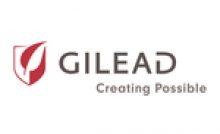Locked Onto Home Theater and High-End Commercial Display Markets, Revenue of Micro LED Large-sized Display Chips Will Reach US$4.5 Billion in 2026, Says TrendForce


TAIPEI, Taiwan–(BUSINESS WIRE)–#Trendforce–Micro LED large-sized displays will move towards the home theater and high-end commercial display markets and the revenue of Micro LED large-sized display chips is estimated to reach US$54 million in 2022, according to TrendForce�s latest research. By 2026, revenue is expected to grow to US$4.5 billion with a compound annual growth rate of 204%. In addition, technical obstacles will be conquered one by one over time. The development of Micro LED large-sized displays will peak from 2026 to 2030 and the one year revenue of Micro LED chips has the opportunity to reach tens of billions of dollars.
In recent years, major global brands in various regions have released Micro/Mini LED self-emissive large-sized display products. Samsung, the worlds leading TV manufacturer, released a 146-inch TV, “The Wall,” in 2018 and continues to release 75-inch, 89-inch, 101-inch, 110-inch, 219-inch, and 292-inch large tiled wall displays at CES every year. Due to the evolution of different application scenarios and technologies, the future development trend of Micro LED large-sized displays will be in home theaters, corporate headquarters, and boutique stores. Commercial indoor and outdoor large-sized displays are mainly based on Mini LED self-emissive large-sized displays. In order to satisfy the requirements of close indoor viewing, Micro LED large-sized displays require a theater-level experience, seamless tiled display splicing, pursuit of zero borders, thin design, and competitive pricing. Thus, active matrix (AM) would be the first choice for display design.
TrendForce states, current Micro LED large-sized displays still face the dual challenges of technology and cost including Micro LED chip cost, and the three key technologies of backplane technology, driving technology, and the mass transfer process. In terms of Micro LED chip cost, due to the enormous number of chips used and the need for consistent wavelength uniformity to achieve perfect display quality, the clean room level requirements for epitaxial and chip processes, control of process conditions, and inspection and maintenance during processes are very strict, greatly increasing relative process defect rate and overall cost. In terms of mass transfer, the current mass transfer technologies used in Micro LED large-sized displays include pick-and-place technology and laser transfer technology, each with its own advantages and disadvantages. TrendForce believes that, although current Micro LED mass transfer technology is still in the product development and adjustment stage, there have been no real quantitative achievements. However, in terms of pick-and-place mass transfer equipment capacity, using 10cm2 transfer stamps to transfer 34*58µm Micro LED chips, production capacity (UPH; Unit per Hour) is approximately 7 million units. If the laser mask opening of laser mass transfer technology is 8 square millimeters, production capacity is approximately 12 million units. No matter which kind of transfer technology, the mass transfer capacity of Micro LED large-sized displays needs to reach at least a 20 million unit level of efficiency and 99.999% yield in the future to meet the conditions for mass commercialization.
Active matrix design will abet the development of Micro LED technology
In terms of backplane and drive technology, passive matrix (PM) drive design is based on a PCB backplane with a passive drive circuit structure, using MOSFET as the current switching element. Therefore, overall structure is more complex and requires a wider placement area for circuit components. In addition, when dot pitch is reduced to less than P0.625, the PCB backplane will encounter the challenges of line width and line space mass production limitations and rising cost. Thus, the current technological state of the passive matrix (PM) drive design is more suited to large-sized display applications utilizing dot pitches greater than P0.625 and equipped with a Mini LED. However, for consumer Micro LED TVs employing a dot pitch less than P0.625, active matrix (AM) drive design will become the new direction of display design. Since a TFT glass backplane with LTPS switching technology is considered mature technology by panel manufacturers, it is necessary to adjust certain portions of the manufacturing process and parameters to precisely control and drive Micro LED current.
In addition, in order to achieve seamless tiled display splicing technology, glass metallization and side wire electrode glass will become further technical challenges. As resolution moves higher and the dot pitch is reduced, the front circuit of TFT glass must be guided to the back along the side or by using through-holes. At this time, glass metallization technology becomes key. Since current glass metallization technology is still afflicted with technical bottlenecks resulting in high cost due to low yield, when these bottlenecks are resolved with future technology, the launch of mass production glass metallization will become the advantage of active matrix backplanes. Future active matrix (AM) drive design with Micro LED chips and seamless splicing technology have the opportunity to become the mainstream technology of Micro LED TV development and the key to unlocking a new wave of Micro LED large-sized display cost optimization.
For further details of this press release, including the table showing estimated global revenue of Micro LED large-sized display chips, please visit:
https://www.trendforce.com/presscenter/news/20220119-11097.html
For more information on reports and market data from TrendForces Department of Optoelectronics Research, please click here, or email Ms. Grace Li from the Sales Department at graceli@trendforce.com
For additional insights from TrendForce analysts on the latest tech industry news, trends, and forecasts, please visit our blog at https://insider.trendforce.com/
About TrendForce (www.trendforce.com)
TrendForce is a global provider of the latest development, insight, and analysis of the technology industry. Having served businesses for over a decade, the company has built up a strong membership base of 500,000 subscribers. TrendForce has established a reputation as an organization that offers insightful and accurate analysis of the technology industry through five major research departments: Semiconductor Research, Display Research, Optoelectronics Research, Green Energy Research, and ICT Applications Research. Founded in Taipei, Taiwan in 2000, TrendForce has extended its presence in China since 2004 with offices in Shenzhen and Beijing.
Contacts
Ms. Esther Feng
Tel: +886-2-8978-6488 ext. 667
estherfeng@trendforce.com
Ms. Pinchun Chou
Tel: +886-2-8978-6488 ext.669
pinchunchou@trendforce.com
Recent Posts
AIA Hong Kong continues to lead the insurance industry with 9 market No.1 in 2024
Number of New Business Policies tops the market for 11 consecutive years HONG KONG SAR…
Feng Wei Ju and 8½ Otto e Mezzo BOMBANA Garner Coveted Diamond Awards in Black Pearl Restaurant Guide 2025
MACAU SAR - Media OutReach Newswire - 25 April 2025 - 2025 Black Pearl Restaurant…
Creww and Real Madrid Next launch Batch 2 of “Real Madrid Next Accelerator for Asia”
TOKYO, JAPAN - Media OutReach Newswire - 25 April 2025 – Creww Inc. (Japan Office:…
Digital Storytelling: “Zhengzhou in Cultural Relics” Debuts with AR Reconstructions Global Premiere on International Day for Monuments and Sites
ZHENGZHOU, CHINA - Media OutReach Newswire - 25 April 2025 – On International Day for…
Chinese and foreign guests gather to talk about innovation and development of Museum in Liangzhu, Hangzhou
HANGZHOU, CHINA- Media OutReach Newswire - 25 April 2025 - From April 23 to 25,…
Hang Lung’s 65th Anniversary Celebrations Arrive at Shanghai Grand Gateway 66 and Plaza 66 Debut of “ButterBear” & Takashi Murakami’s Ohana Hatake Pop-up
Fuel double-digit growth in foot traffic and sale HONG KONG SAR and SHANGHAI, CHINA -…


